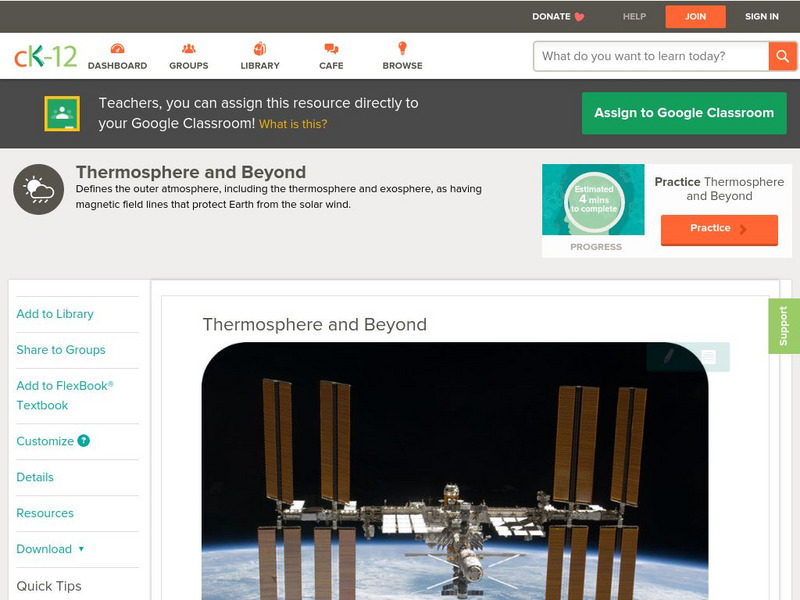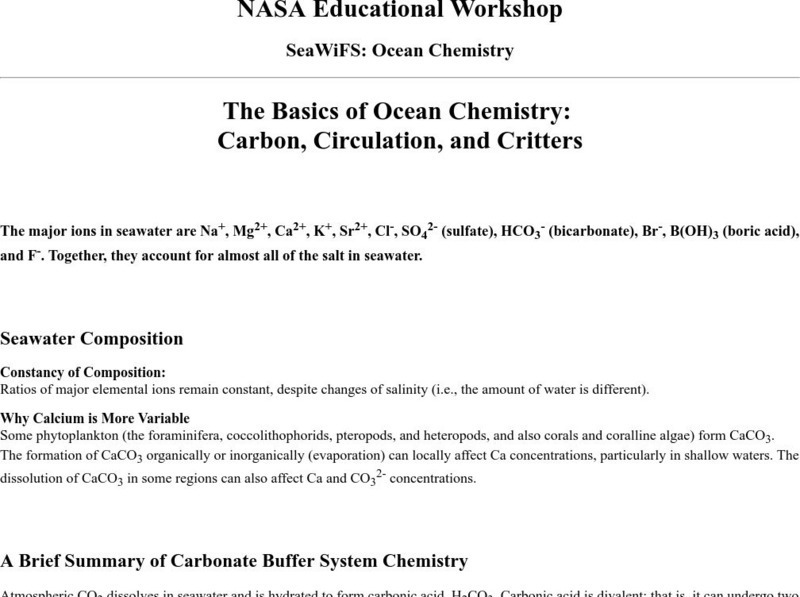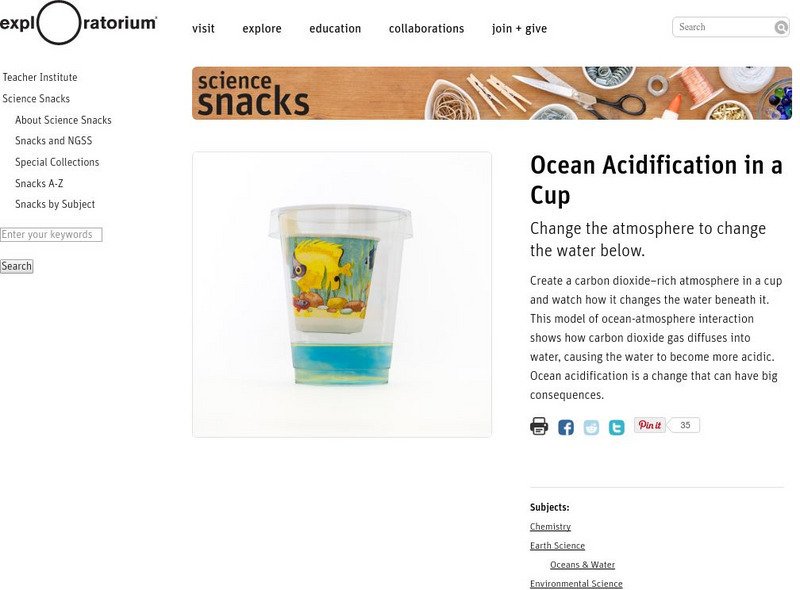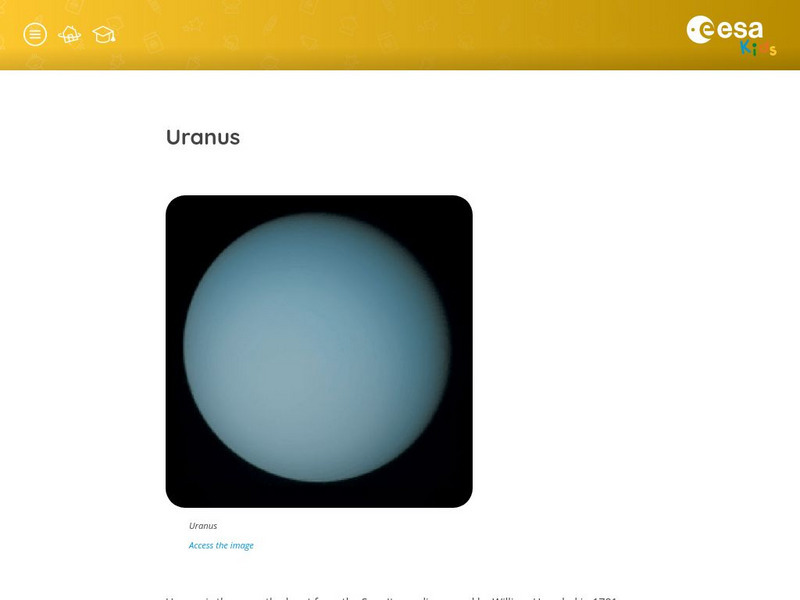CK-12 Foundation
Ck 12: Earth Science: Thermosphere and Beyond
[Free Registration/Login may be required to access all resource tools.] Describes the properties of the thermosphere and exosphere.
NASA
Nasa Space Place: Thermosphere
A brief explanation of the thermosphere home to the International Space Station.
Science Struck
Science Struck: Ionosphere Facts
Learn facts about the ionosphere. It is an extension of the thermosphere, one of the five layers of the atmosphere.
NASA
Nasa: The Basics of Ocean Chemistry: Carbon, Circulation, and Critters
An explanation of ocean chemistry, supported by illustrations, for example, of the global carbon cycle in the 1980s and the annual carbon dioxide flux. The concentration of nutrients in the ocean is discussed for its impact on marine...
University Corporation for Atmospheric Research
Ucar: Atmospheric Chemistry Memory Game
Choose a difficulty level. Then click on the tiles (squares) to reveal pictures of molecules. Try to match two pictures.
ClassFlow
Class Flow: Atmospheric Layers
[Free Registration/Login Required] The Earth: The student demonstrates knowledge of how processes which shape and affect the Earth and how it relates to the Universe.
University Corporation for Atmospheric Research
Ucar: Comparing Planetary Gases
Use jelly beans to compare the compositions (amounts of different gases) of the atmospheres of Earth, Mars, and Venus.
Exploratorium
Exploratorium: Science Snacks: Ocean Acidification in a Cup
In this activity, you can observe how ocean acidification can have big consequences. This activity has students creating a cup that has a carbon dioxide-rich atmosphere that allows them to watch how the water changes beneath the atmosphere.
European Space Agency
European Space Agency: Esa Kids: Our Universe: Jupiter
A basic overview of the planet Jupiter. Links to information about the other planets and objects in our solar system are included.
European Space Agency
European Space Agency: Esa Kids: Our Universe: Uranus
A basic overview of the planet Uranus. Links to information about the other planets and objects in our solar system are included.
NASA
Nasa: What Is Ocean Color?
This site from NASA explains the meaning behind the different colors of the oceans. Gives information as to the role of phytoplankton in the color of the oceans and affects of the carbon cycle on the oceans.
Other
University of Evansville: Art Studio Chalkboard
This site from the University of Evansville is a great place for the aspiring artist to visit. Receive free professional advice and tips on basic drawing techniques. The site focuses on perspective drawing and shading.
TeachEngineering
Teach Engineering: Using Spectral Data to Explore Saturn and Titan
Students use authentic spectral data from the Cassini mission of Saturn and Saturn's moon, Titan, gathered by instrumentation developed by engineers. Taking these unknown data, and comparing it with known data, students determine the...
BBC
Bbc: Schools: Chemistry (Single Science)
Chemistry is the study of the composition, behavior and properties of matter, and of the elements of the Earth and its atmosphere. This site provides links to chemistry exams over courses in BBC: AQA, Edexcel, Eduqas, OCR 21st Century,...
TeachEngineering
Teach Engineering: Air Pollution
Students are introduced to the concept of air quality by investigating the composition, properties, atmospheric layers and everyday importance of air. They explore the sources and effects of visible and invisible air pollution. By...
Science4Fun
Science4 Fun: Uranus
Learn fun facts and details about the atmosphere, composition, and discovery of Uranus, the seventh closest planet to the sun.
Howard Hughes Medical Institute
Hhmi: Biointeractive: Earth Viewer
Watch the earth change with this interactive app? What did Earth look like 250 million years ago? Or 1 billion years ago? Or 4.5 billion years ago? What was the climate like in the deep past? Find the answers with EarthViewer, an...
Science Education Resource Center at Carleton College
Serc: Global Warming Graph Analysis
Students interpret a variety of graphs from Intergovernmental Panel on Climate Change reports learning the details of climate change.
Science4Fun
Science4 Fun: Pluto
Learn fun facts and details about the atmosphere, geography, composition, and discovery of Pluto, a dwarf planet.
Science4Fun
Science4 Fun: Neptune
Learn fun facts and details about the atmosphere, composition, and discovery of Neptune, the last planet in our solar system.
Science4Fun
Science4 Fun: Saturn
Learn fun facts and details about the atmosphere, composition, and discovery of Saturn, the second largest planet.
Science4Fun
Science4 Fun: Mercury
Learn fun facts and details about the atmosphere, geography, composition, and discovery of Mercury, the closest planet to the sun.
Science4Fun
Science4 Fun: Venus
Learn fun facts and details about the atmosphere, geography, composition, and discovery of Venus, the second closest planet to the sun.












